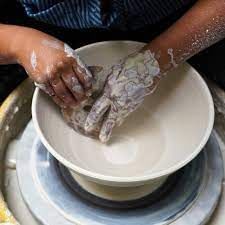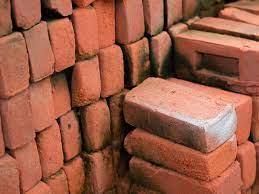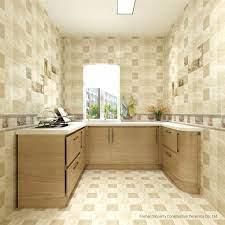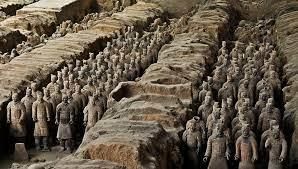Ceramics - Year 7 PDF Download
Introduction
- Ceramics are made from soft substances that become hard and brittle when heated.
- The uses of ceramics are closely related to their properties.
- Some uses of ceramics are obvious, like coffee mugs, while others are less apparent, such as components in car engines.
Ceramics
Ceramics are materials that are hard and durable. They are created by heating a soft substance to make it hard. This process involves baking a starting material in a kiln, which is a very hot oven. Kilns can reach temperatures of over 1300 °C, allowing for the firing of different clays.
Formation of Ceramics
- These malleable materials are transformed through shaping and heating processes into rigid ceramics.

- These soft materials are shaped and then heated to form harder materials known as ceramics.
- The newly formed hard ceramic materials have a fixed shape and cannot be bent.
Stages of Firing Process
- Water within the clay evaporates as the material is heated, transitioning from a liquid to a gas below its boiling point.
- Chemical reactions take place, altering the material's composition by breaking and forming chemical bonds between atoms to create new substances.
Uses of Ceramics
Ceramics serve a multitude of purposes, attributed to their distinctive properties. The characteristics of ceramics encompass:
- Hardness
- Strength under compression
- Brittleness, indicating susceptibility to breaking or shattering
- Heat resistance
1. Structural uses
- Ceramic materials are utilized for creating strong structural products. For instance, bricks, which are crafted from baked molded clay, exemplify ceramic structural items.
- Advantages of bricks include:
- They possess hardness, making them resistant to scratches.
- They exhibit strength under compression, ensuring that buildings withstand their own weight.
- A notable disadvantage is:
- Bricks are inherently brittle, susceptible to breakage if mishandled during construction.

2. Ceramics in the kitchen and bathroom

- Ceramics can be molded into various shapes and glazed to achieve a non-porous surface. This quality is beneficial in maintaining hygiene as liquids containing microbes cannot penetrate the ceramic surface, thus preventing the spread of diseases.
- Various items ranging from cooking utensils to toilets are manufactured using ceramics.
Advantages of Using Ceramics in the Kitchen and Bathroom
- The starting clay materials are malleable: Capable of being hammered or pressed into a new shape without breaking. This quality allows ceramics to be made into various shapes.
- Ceramics are heat-resistant: They can withstand high temperatures without breaking, making them suitable for use in ovens without the risk of breakage.
Malleability of Ceramic Materials
- Malleability refers to the ability of clay materials to be reshaped without breaking.
- For example, when clay is formed into pottery, it can be easily molded and crafted into different designs without losing its structural integrity.
Heat Resistance of Ceramics
- Heat-resistant ceramics can endure high temperatures without damage.
- This property ensures that ceramic items remain intact even when exposed to heat, such as in cooking or baking processes.
Disadvantage of Using Ceramics
- Ceramics can be brittle: Despite their malleability and heat resistance, ceramics are prone to breakage if subjected to sudden impacts or excessive force.
Ceramics are typically brittle, which means objects like ceramic plates are prone to breaking when dropped.
3. Technical Uses
- Ceramics find practical applications in engineering due to their lightweight nature and heat resistance.
- For instance, honeycomb-shaped ceramic structures are employed to support metals in catalytic converters, facilitating chemical reactions that convert harmful gases like nitrogen monoxide and carbon monoxide from car exhausts into less harmful compounds like nitrogen and carbon dioxide.
Advantages of using ceramics in engineering include:
- Ceramics are valued for their lightweight properties, making them advantageous in applications where weight is a concern.
- They possess excellent thermal resistance, ensuring they can withstand high temperatures without deforming or degrading.
- Ceramic materials can be tailored to have specific properties, such as electrical insulation or heat conduction, making them versatile for various engineering needs.
- Their chemical inertness allows ceramics to be used in environments where corrosion or chemical reactions would compromise other materials.
4. Decorative uses
- Terracotta, a type of ceramic material, is commonly employed for decorative purposes. This material is fired at lower temperatures and often left unglazed to showcase the natural color of the clay. It has been extensively used in sculptural art.
- The Terracotta Army stands as a renowned collection of terracotta sculptures crafted to safeguard the first Emperor of China in the afterlife.

FAQs on Ceramics - Year 7
| 1. What are some common examples of ceramics? |  |
| 2. How are ceramics made? |  |
| 3. What are the main properties of ceramics? |  |
| 4. What are the different uses of ceramics? |  |
| 5. How do ceramics compare to other materials like metals and plastics? |  |













